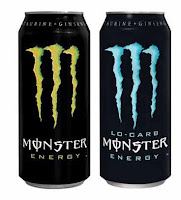By: Tracy Kracker, NCC News



Energy drinks are a fast-growing, five billion dollar industry, and a popular fist choice source of caffeine for anyone needing a boost or a buzz. Matija Popovich is one of them. When Popovich needs help staying awake delivering sandwiches until three o’clock in the morning, he reaches for an energy drink, instead of coffee.
“It’s not like an addiction, oh I need one. It just makes the job you do easier, whatever you do, focus or physical,” Popovich said.
The industry is focusing on young adults like Popovich. Research says people 18 to 24 are nearly twice as likely to use energy drinks. But they might come with more than consumers bargain for. One eight ounce serving of an energy drink can have up to as much caffeine as four cans of coke. But, cardiologist Dr. Michael Gabris said excessive caffeine can be dangerous.
“It won’t lead to heart attacks, but caffeine can cause a racing heart beat. It can lead to dizziness, light-headedness, and in high doses, it can cause you to faint,” Gabris said.
Heavy use can lead to even more caffeine consumption. Nutritionist Michelle Gallant said caffeine can be addictive.
“When you get into those higher doses, you’re not getting the stimulant effect of it anymore. You’re kind of avoiding the withdrawal from the caffeine,” Gallant said.
Despite these risks, young adults are still turning to energy drinks for that extra boost. And, they found a new use for drinks them as mixers with alcohol. But, the blend of a stimulant with a depressant comes with its own dangers. Energy drinks can mask some of the clues telling a person they are drunk, which can lead to more drinking. Dr. Kate Carey is a psychologist who studies alcohol use among college students.
“What people say is when they use it at the same time, they’re feeling alert. They keep drinking,” she said, “and, when the energy drink wears off, the alcohol hits them hard.”
Alex Bercheck is a graduate student at Syracuse University. He said his favorite drink is Red Bull and vodka, which he calls the devil’s drink.
“Alcohol gives you ideas to do all these stupid, crazy things you usually don’t have the energy to do because you’re like, ‘oh, I’m drunk.’ But,” he said, “with Red Bull vodka, you get the energy and stupid ideas.”




 "Ray's Kids"
"Ray's Kids"















